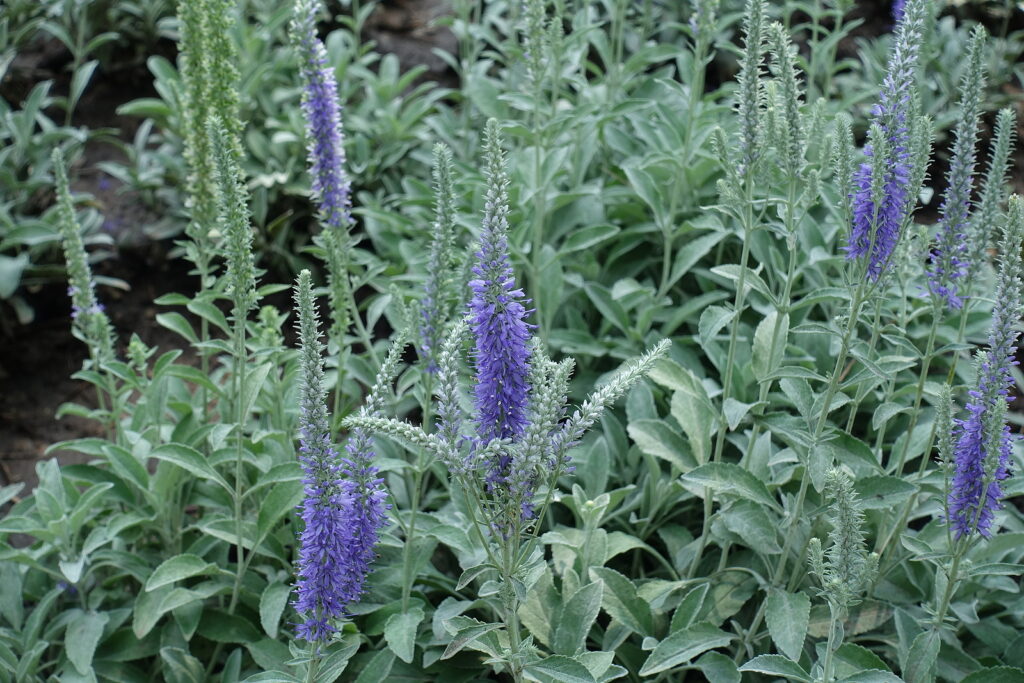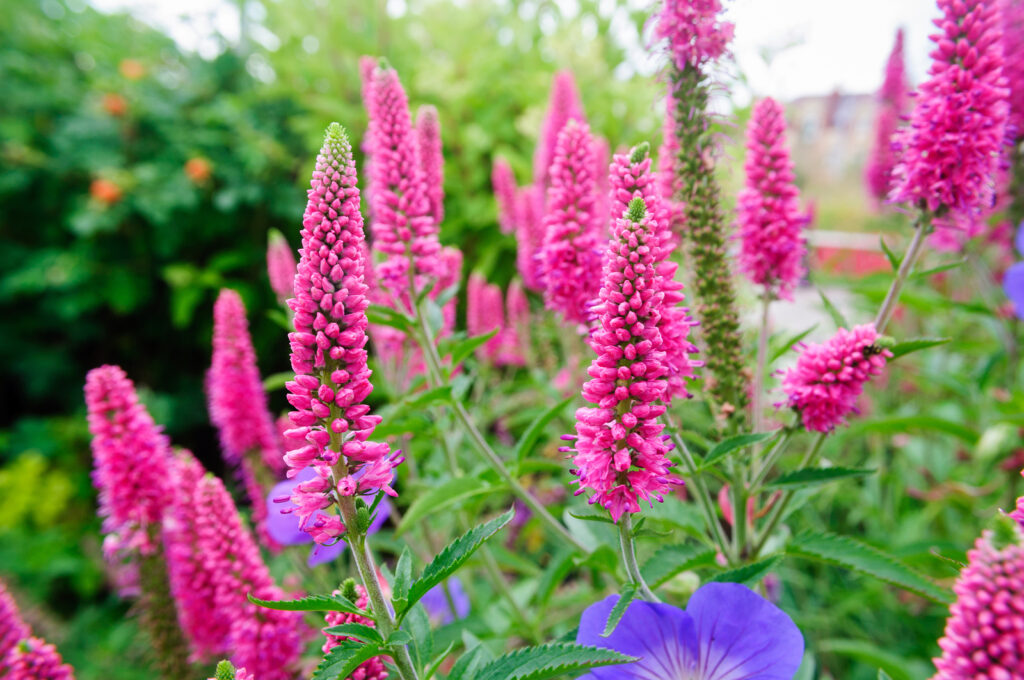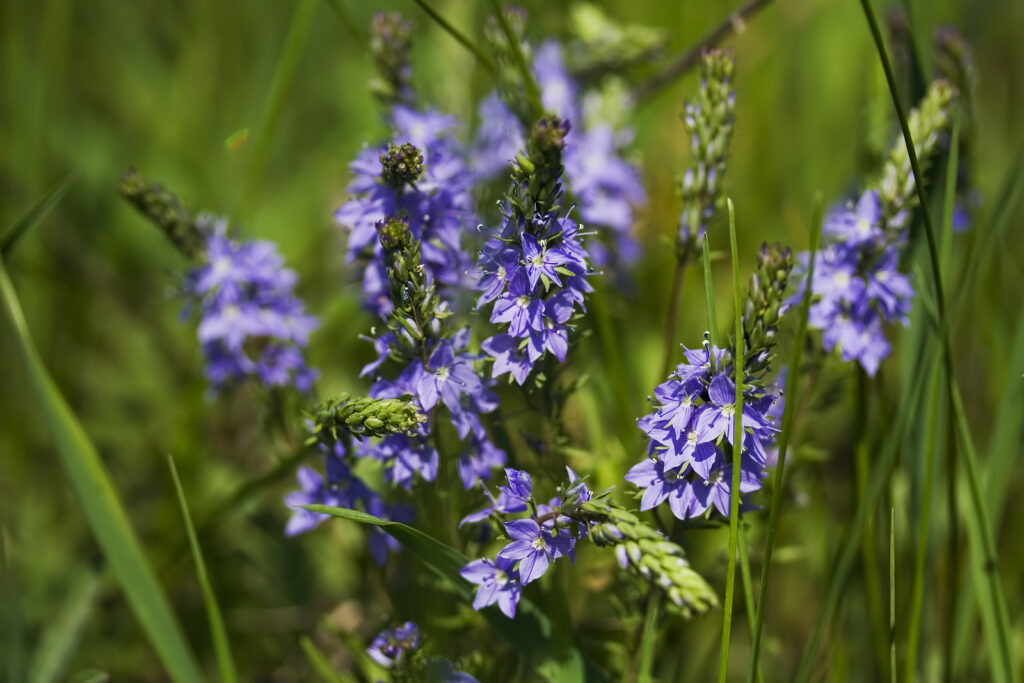Veronica, best known as speedwell, is a vigorous, easy-to-grow plant with a rich palette of colors including true blue, violet-blue, pink, and white.
Veronica is a group of long-blooming annuals and perennials. Speedwells grow 12 to 36 inches tall depending on the species. They bear colorful 6- to 8-inch spikes of tiny flowers mostly in summer.
Veronicas have linear to lance-shaped or rounded leaves. Flower spikes are bottlebrush-like with individual blooms 1/2 inch or less across. Most are upright growers but there are a few species that are low-growing and mat-forming.
Good Products for Garden Care at Amazon:
- Garden Safe Snail and Slug Bait
- Bonide Sulfur Fungicide
- Monterey BT Caterpillar Killer
- Neem Bliss 100-% Cold Pressed Neem Oil
- Safer Brand Insect Killing Soap
- PyGanic Botanical Insecticide

Get to know Veronica
- Plant type: Perennials and annuals
- Growing Zones and range: Zones 3 to 8
- Hardiness: Hardy to -30°F (-34°C)
- Height and width: 6 inches to 3 feet (.9m) or more tall and wide
- Foliage: Alternate, simple, entire, or toothed, stalkless leaves
- Flowers: Small outward-facing flowers 1/2-inch across on spires
- Flower colors: Purple, blue, pink, white
- Bloom time: Late spring to midsummer
- Uses: Borders, specimen plant
- Common name: Veronica, Speedwell
- Botanical name: Veronica spp.
- Family: Scrophulariaceae
- Origin: Most occur in South America, some in Africa, Asia, Australasia, and North America

Where to plant Veronica
- Plant Veronica in full sun; speedwell will tolerate light shade, especially in Zones 7-8.
- Grow Veronica in humus-rich to average soil that is moist but well-drained.
- Veronica will not tolerate constantly moist conditions, especially in winter.
Veronica uses and companions
- Use Veronica in a mixed or herbaceous border.
- Use cushion or mating forming species in a rock garden.
- Purple flowers combine well with pastel yellow, pink, and white flowers.
- Good garden companions for Veronica include Coreopsis, Diascia, Geranium Heuchera, Iberis sempervirens, Malva, Sedum.

When to plant Veronica
- Set Veronica in the garden in spring or fall.
- Sow seed indoors in late winter; plants will be ready for transplanting to the garden in about 20 days. Cover seed with 1/8 inch of light potting mix.
- Sow seed at 70° to 75°F (21-24°C); germination will occur in 7 to 14 days.
Planting and spacing Veronica
- Space Veronica 6 inches to 36 inches (15-91cm) apart depending on the variety.
How to water and feed Veronica
- Veronica needs abundant moisture; keep the soil moist. Veronica is shallow-rooted and thus not drought-tolerant.
- Fertilize Veronica every 4 to 6 weeks with an all-purpose fertilizer or work in a slow-release fertilizer in spring.

Veronica care
- Mulch around Veronica to conserve soil moisture.
- Trim off spent flowers to keep the plant tidy and encourage new blooms.
- Taller plants may need staking.
- Cut plants back after they flower; some species may rebloom.
- Divide Veronica every 3 or 4 years; too many stems will weaken plants.
- Powdery mildew and leaf spot can sometimes be a problem for Veronica.

Veronica propagation
- Propagate by dividing the clumps in spring or fall.
- Take cuttings in late spring or early summer.
- Sow seeds in late spring or early summer.
- Veronica seeds will germinate in 15 to 30 days at about 70°F (21°C).
Veronica varieties to grow
- Veronica austriaca spp. teucrium, Hungarian speedwell: Grows 6 to 24 inches (15-61cm) tall; bears deep blue flowers in 4 to 6-inch long spikes in late spring and early summer; ‘Crater Lake’ is a cultivar with intensely blue flowers.
- V. gentianoides, gentian speedwell: Species grows to 24 inches tall; bears 10-inch long spikes of pale blue to white flowers in late spring.
- V. incana, silver speedwell: Mat-forming clumps with deep blue flowers on 10-inch stems; cultivars with pink, rose, and violet flowers.
- V. longifolia, long-leaved speedwell: Species grows to 4 feet (1.2m) tall; bears dense 10-inch clusters of small lilac-blue flowers in late summer; cultivars ‘Icicle’ bears white flowers, ‘Rosea’ bears pink flowers. ‘Foerster’s Blue’ bears deep blue flowers.
- V. prostrata, harebell speedwell: low-growing species to 6 inches tall; produces short spikes of starry blue flowers in late spring.
- V. spicata, spike speedwell: Species grows to 36 inches tall; bears dense 12-inch spikes of purple, blue, pink, or white flowers in early summer; cultivars include ‘Blue Charm’ with pale lavender flowers, ‘Red Fox’ with deep pink flowers, ‘Icicle’ with white flowers.
- V. ‘Sunny Border Blue’: Hybrid grows to 24 inches tall; bears violet-blue flowers on 7-inch spikes from early summer.
- V. ‘Waterperry’: Hybrid low, trailing plants with round pale blue flowers in clusters; spring blooming.















